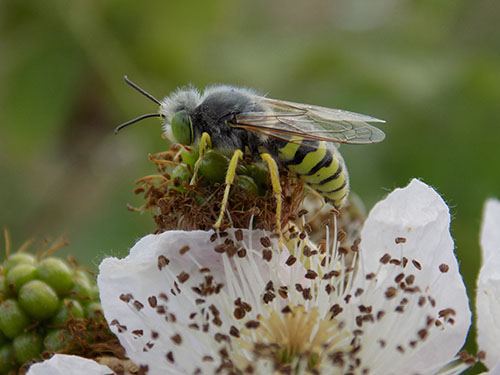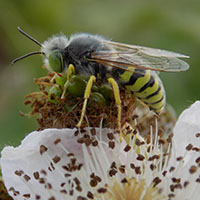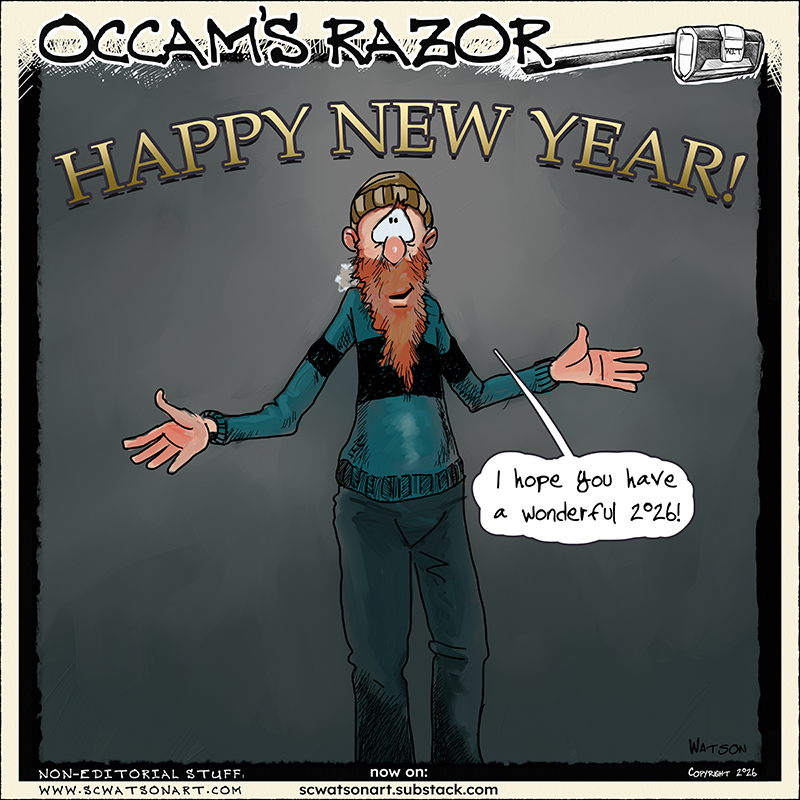Sunday, December 18, 1:30 – 4:30 p.m., Darvills
— from Russel Barsh —
 The nonprofit conservation laboratory Kwiaht celebrates the holiday season with the launch of a new adult coloring book and illustrated guide to many of the overlooked native insects that pollinate the wildflowers, orchards and gardens of Orcas. Author-photographer Russel Barsh and illustrator Julia Mira will be at Darvill’s on Sunday afternoon, December 18, from 1:30 to 4:30, to talk about their work and to sign copies of the book. There will also be loose sheets of drawings for kids of all ages to color, and some rewards for the best young artists to take home with them.
The nonprofit conservation laboratory Kwiaht celebrates the holiday season with the launch of a new adult coloring book and illustrated guide to many of the overlooked native insects that pollinate the wildflowers, orchards and gardens of Orcas. Author-photographer Russel Barsh and illustrator Julia Mira will be at Darvill’s on Sunday afternoon, December 18, from 1:30 to 4:30, to talk about their work and to sign copies of the book. There will also be loose sheets of drawings for kids of all ages to color, and some rewards for the best young artists to take home with them.
A Bouquet of Pollinators from the San Juan Islands features 18 of the hundreds of bees, hover flies, and other insects that Barsh has photographed visiting flowers to eat pollen or sip nectar. “When I mention pollinators, most people think of honeybees,” Barsh says. “But honeybees are bred and raised to make honey, and they are actually a domesticated European species, while our landscape supports a great diversity of native bees that continue to do most of the pollinating.” Sadly, he says, most wild bees go unrecognized by gardeners, and are often victims of spraying, clearing, and turning soil.
“In the islands, you could say that more pollinators are killed by uninformed good intentions than by any other cause,” Barsh adds. “Two of the biggest issues are Importing uninspected mason bees and leafcutter bees, which are unnecessary and can spread parasites and diseases, and trying to make gardens and backyards too neat, which eliminates nesting habitat for wild bees.”
Recent research in Europe suggests that hoverflies account for as much as half of the pollination of meadows and crops. These small flies that mimic the markings of wasps are poorly studied in the U.S., although many species are highly migratory and appear have spread throughout Europe, northern Asia, and North America thousands of years ago. Many common hoverflies are a double benefit for gardeners and farmers since like ladybird beetles, their larvae are voracious predators of aphids.
Many butterflies and moths, beetles, common flies, even some of the hunting wasps contribute to pollination, Barsh says. “The key is something I call insect Velcro; patches of hair that can brush some pollen off the anthers of flowers and hold it until the next flower is visited.”
Illustrator Julia Mira has exhibited her paintings and collages throughout the islands, and has also long been a teacher at Waldron School and the Orcas OASIS program. Her illustrations of insects range from relatively simple, organic art nouveau constructions to complex Escher-like mandalas. No one style dominates her drawings for the book: an artistic commentary on the diversity of pollinators.
All net proceeds of the sale of this book are applied to Kwiaht’s ongoing study of wild pollinators including an on-line photographic handbook of native island bees and hoverflies that will be available in the spring. Kwiaht’s work on native pollinators is also supported by a science grant from the Department of the Interior, and by the Satterberg Family Foundation.
For further information contact: Kwiaht@gmail.com.
**If you are reading theOrcasonian for free, thank your fellow islanders. If you would like to support theOrcasonian CLICK HERE to set your modestly-priced, voluntary subscription. Otherwise, no worries; we’re happy to share with you.**









I think this is a wonderful way to introduce our native pollinators to the public. Gardeners should take note of how important it is to leave large areas of native habitat around their gardens for their nesting needs.